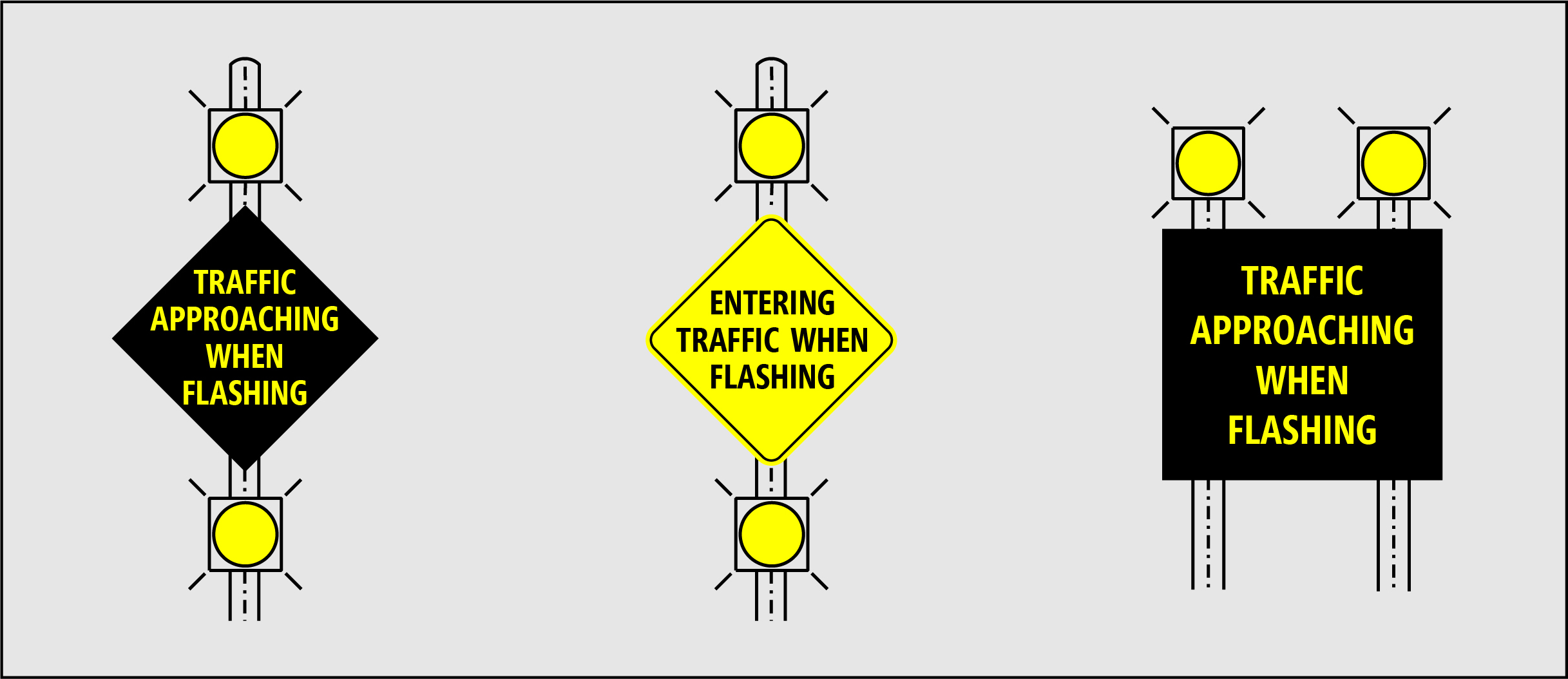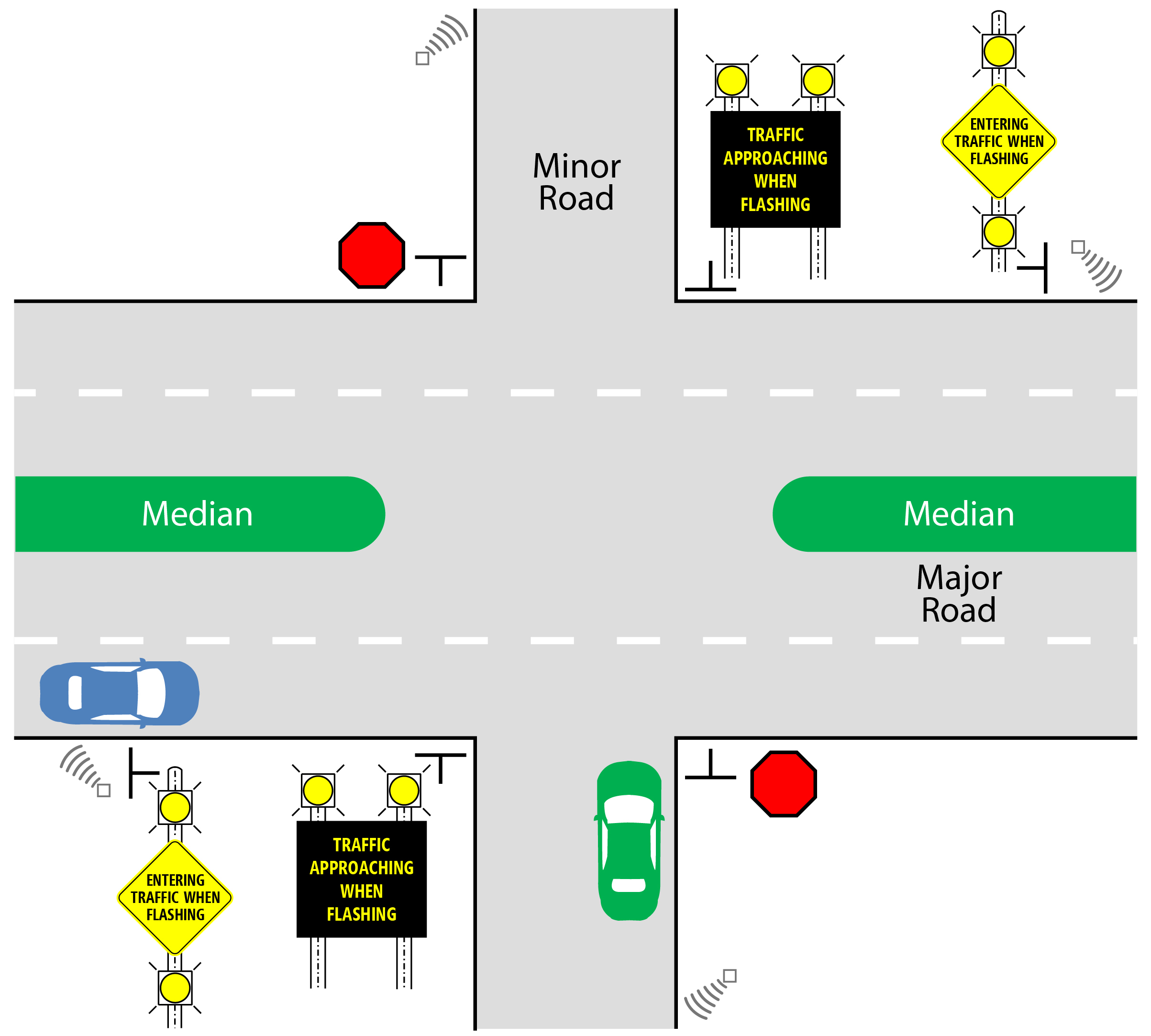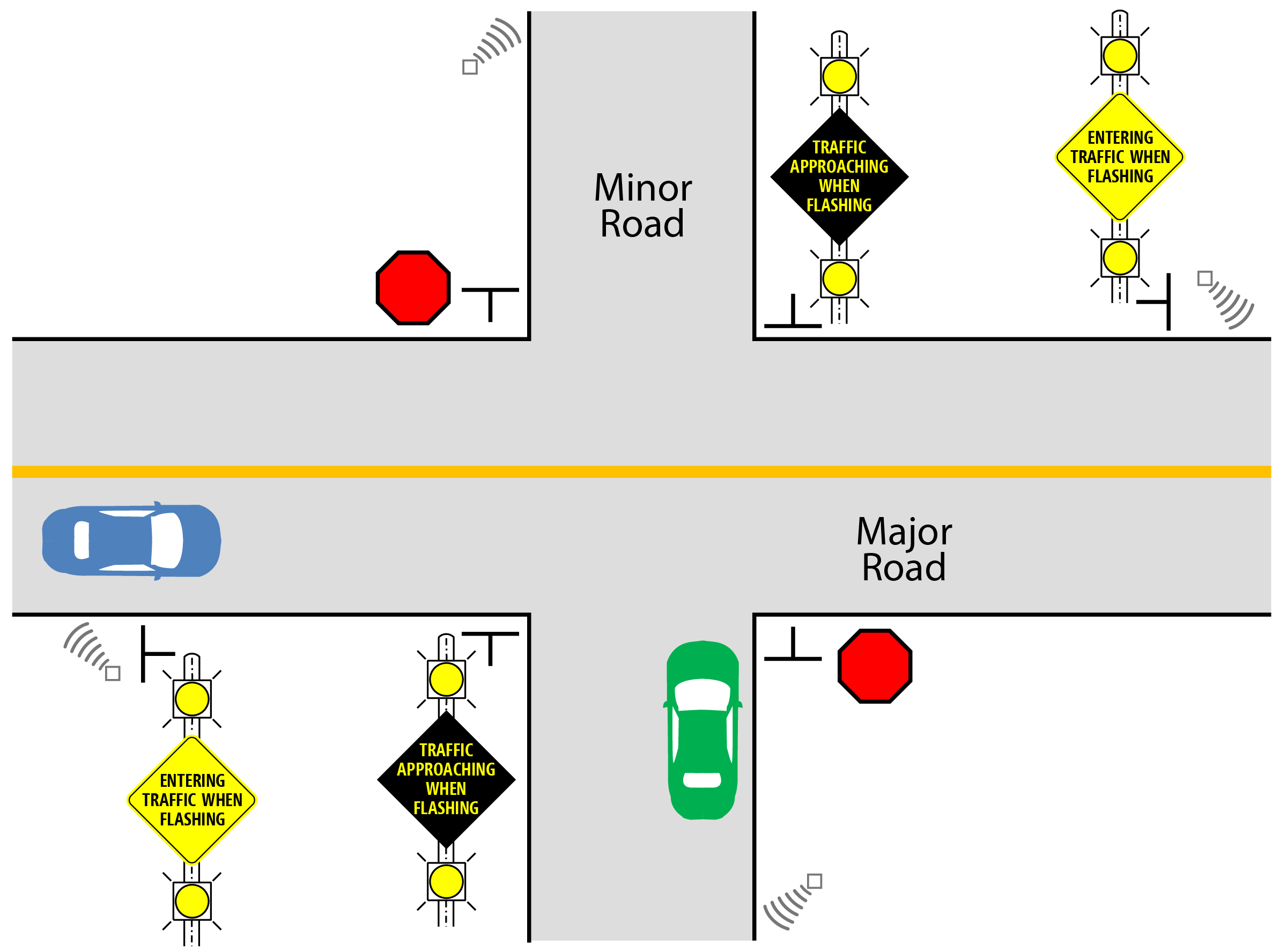The Indiana Department of Transportation is improving traffic safety across Indiana by installing Intersection Conflict Warning Systems (ICWS) at some non-signalized, stop-sign controlled intersections to reduce the likelihood of severe vehicle crashes. This is a traffic safety measure proven effective in other states under certain traffic and road conditions and is being introduced in Indiana.
INDOT plans to install ICWS at multiple Indiana highway intersections statewide in 2020.
The primary feature of ICWS is an added alert to drivers to raise awareness of approaching traffic at two-way stop-controlled intersections. Stop-controlled intersections consist of a major road intersecting a minor road. The major road typically carries higher traffic volumes, and the driver approaching the intersection is not faced with a stop sign but may see advance warning signs. In comparison, the minor road usually carries lower traffic volumes, and the approach is controlled by a stop sign. Crashes at these intersections continue to represent a significant share of motor vehicle fatalities and injuries. 
The ICWS uses vehicle detectors under the pavement with fixed and variable messages in signing along with flashing lights to notify drivers on both roads whether there is an approaching or waiting vehicle. The system includes signs and flashing amber warning lights that provide drivers with a real-time warning of vehicles either approaching the intersection on the major road or waiting at the stop sign to enter the intersection from the minor road.
Drivers on the major road will see a static ENTERING TRAFFIC WHEN FLASHING sign and flashing amber warning lights when a vehicle is waiting on the intersecting minor road. Drivers on the minor road, in addition to a stop sign, will see a constantly illuminated blankout sign message TRAFFIC APPROACHING WHEN FLASHING and an amber flashing light when a vehicle is approaching the intersection on the major road. The blankout sign message on the minor road always remains on, even when no vehicle is detected on the major road coming into the intersection.
In the case of a power outage, the blankout sign on either the major or minor road will be black/off, but the regulatory stop sign will always be present on the minor road.


According to the Federal Highway Administration, intersection conflict warning systems can reduce severe crashes at intersections by 20% to 30%.
Intersection crashes occur for multiple and complex reasons, including factors associated with driver behavior, condition and features of the vehicle, and road and site characteristics. Treatment of an intersection with ICWS will not eliminate all crashes but will reduce the frequency of select types.
ICWS are not intended to assist drivers in selecting suitable gaps in approaching traffic; rather, the intent of their use is to assist drivers with rejecting unsuitable gaps. The selection of unsuitable gaps has been shown to be a contributing factor to crashes at intersections where the traffic on the major road is uncontrolled while traffic on the minor road is controlled by a stop sign.
What Should Motorists Do?
Major road users:
- Use caution when approaching the intersection, even if the ENTERING TRAFFIC WHEN FLASHING sign amber lights are not flashing.
- If the ENTERING TRAFFIC WHEN FLASHING sign amber lights are flashing, be aware that traffic from the minor road may be entering in front of you.
Minor road users:
- Obey the posted stop sign. Proceed after stopping when a suitable gap in traffic is presented.
- If the blankout TRAFFIC APPROACHING WHEN FLASHING sign amber lights are flashing, be aware that a vehicle has been detected approaching on the major road. Proceed after stopping when a suitable gap in the traffic stream is presented.
- If the blankout TRAFFIC APPROACHING WHEN FLASHING sign amber lights are not flashing, an approaching vehicle on the major road has not been detected. Stop, and proceed when a suitable gap in the traffic stream is presented.
